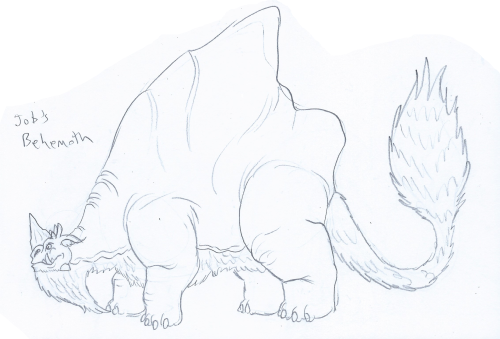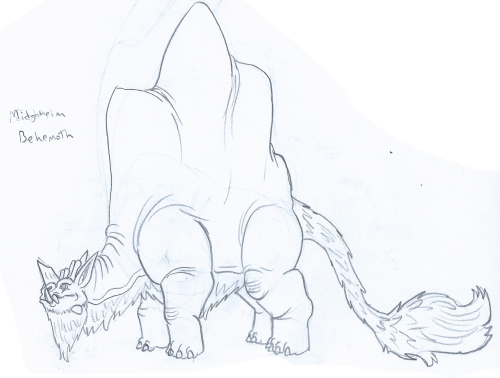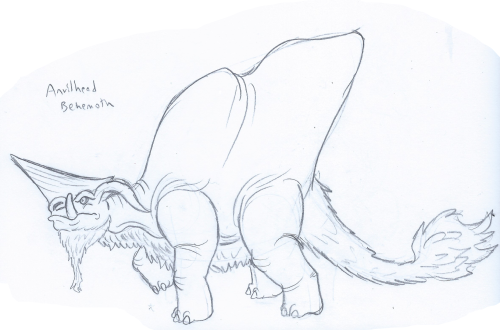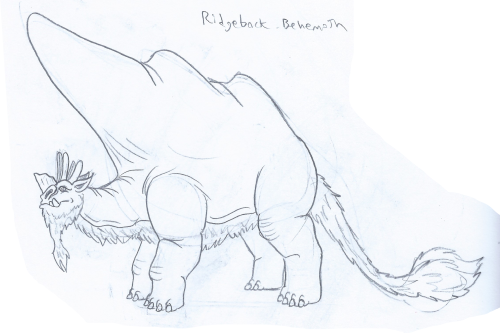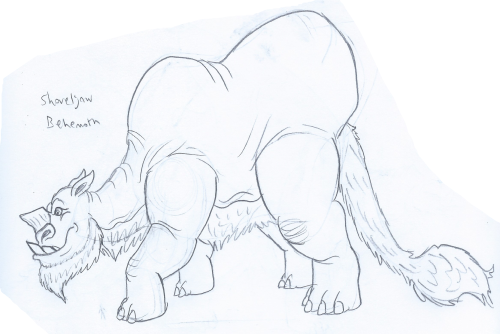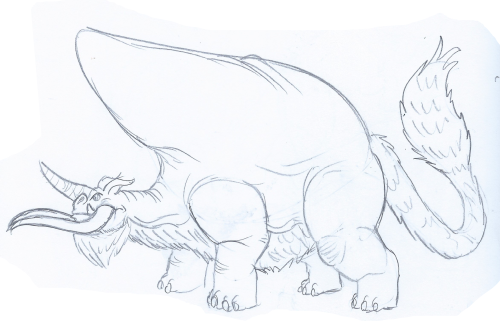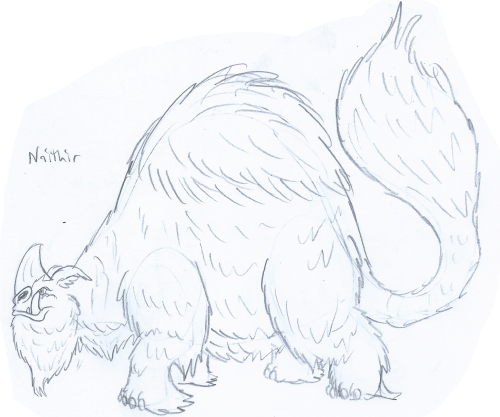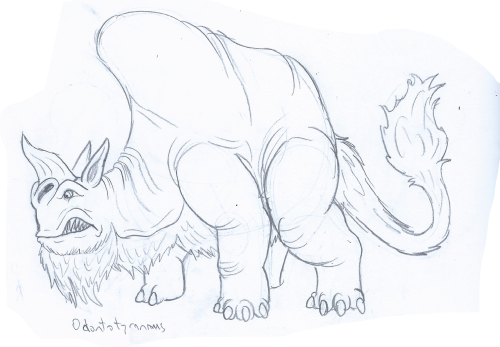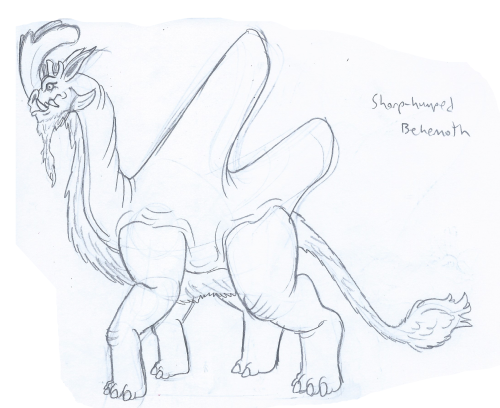Going off of what I posted yesterday, here’s some big ol’ behemoths for your enjoyment.Job’s Behemot
Going off of what I posted yesterday, here’s some big ol’ behemoths for your enjoyment.Job’s Behemoth: The oldest known species of Behemoth, which traveled to Midgaheim from a continent to the South East by a land bridge that no longer exists. The largest of its clade, this titanic mammal is often mistaken for a mountain range during its century-long naps. When awake, a Job’s Behemoth immediately goes on an eating binge, which can be likened to a natural disaster for any living thing in its path.Midgaheim Behemoth: Second only to Job’s Behemoth in size, this titanic brute’s omnivorous appetite is slightly less catastrophic than its ancestor’s thanks to its shorter hibernation cycle and more picky eating habits. Though all behemoths produce dung that works as a powerful fertilizer, the Midgaheim Behemoth’s is by far the most effective. As a result, just as many ecosystems owe their existence to these beasts as those that were ravaged by them.Anvilhead Behemoth: Given that behemoths are often preyed upon by dragons, ogres, and other large predators in Midgaheim, it’s only natural some developed defenses against them. The Anvilhead Behemoth’s alicorn nasal horn is large and wide enough to shield its head and neck from dragonfire, protecting it from the many dragons that would gladly make a meal of it.Longhorn Behemoth: Though on the small side of the behemoth family, this behemoth is one of the most deadly, as its goring horn, strong neck, powerful legs, and hair-trigger temper make it a terrifying adversary.Ridgeback Behemoth: One of the most peaceful behemoth species, the Ridgeback’s diet is primarily vegetarian, with only rare indulgences in eating meat.Shoveljaw Behemoth: A truly gluttonous creature, the Shoveljaw Behemoth is completely careless in what it consumes, uprooting vast quantities of earth with every bite as it hastily tries to get the maximum amount of matter in its maw.Wartusk Behemoth: Though useful in fending off enemies and slaying large prey, the enormous tusks of the Wartusk Behemoth are more often than not used in mating competitions.Naithair: A species of Behemoth adapted for cold environments like the taigas and tundras of Germanor and Ruslovak, the Naithair’s body is covered in thick wool and bristles, which not only insulated its body, but stab and sting into anything that may try to prey on them.Odontotyrannus: One of the smallest Behemoths is also one of the most dangerous. The Odontotyrannus is almost purely carnivorous, and most disturbingly, seems to prefer human-sized prey most of all. With a mouth fills with long, needle-like teeth and a prehensile tongue designed to root into caves, burrows, and more recently, man-made buildings, these monstrous beasts can wipe out entire village populations while leaving the structures in tact, creating eerie ghost towns in their wake.Sharp-Humped Behemoth: The most lithe and graceful its kind, the Sharp-Humped Behemoth is considered by many to be an elegant and awe-inspiring sight, and stories of the beast often focus on its majesty and grandeur while down-playing the fact that it’s just as likely to flatten any creature in its path as the rest of its kin. -- source link
Tumblr Blog : tyrantisterror.tumblr.com
#midgaheim
